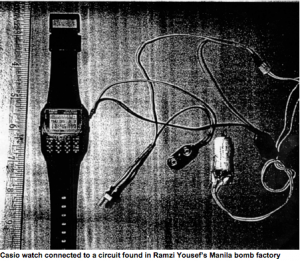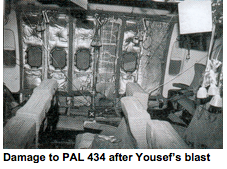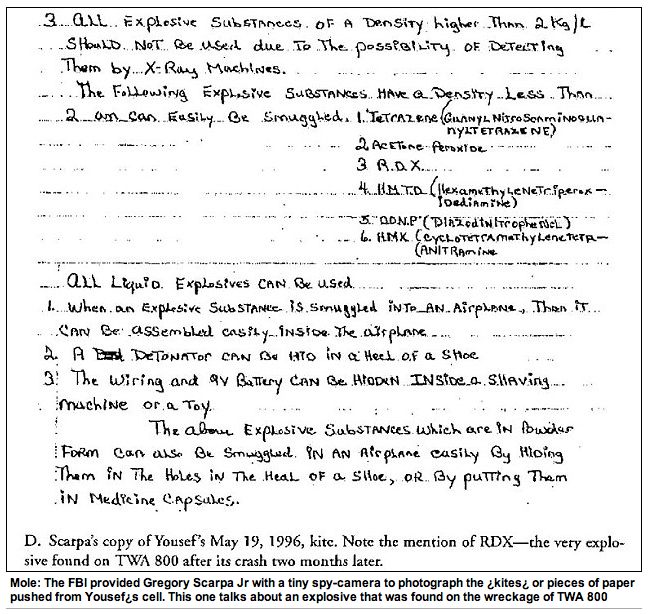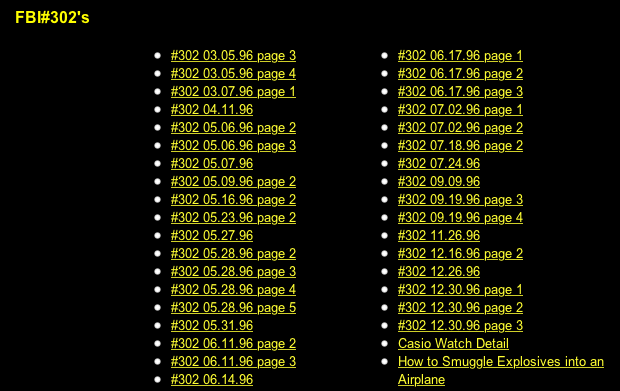Recent Posts
- Jason Leopold calls TRIPLE CROSS a “9/11 masterpiece”
- Peter Lance Biography
- In 1966 billionairess Doris Duke killed gay war hero and Renaissance Man Eduardo Tirella outside the gates of her Newport, RI estate and got away with murder. Now, despite overwhelming evidence of her guilt, the Newport, PD still won’t acknowledge the truth
- Salon.com publishes The Intro to my HarperCollins FBI/Mafia exposé DEAL WITH THE DEVIL
- Get HOMICIDE in four editions. Rated No.1 among The Five Best Crimes Biographies of All Time
Archives
- September 2025
- March 2025
- February 2025
- January 2025
- December 2024
- November 2024
- October 2024
- July 2024
- June 2024
- March 2024
- February 2024
- January 2024
- November 2023
- June 2023
- April 2023
- March 2023
- February 2023
- December 2022
- August 2022
- July 2022
- March 2022
- February 2022
- January 2022
- December 2021
- August 2020
- July 2020
- June 2020
- February 2020
- January 2020
- November 2019
- September 2019
- April 2019
- February 2018
- January 2018
- December 2017
- November 2017
- September 2017
- June 2017
- April 2017
- February 2017
- January 2017
- December 2016
- November 2016
- October 2016
- September 2016
- August 2016
- July 2016
- June 2016
- May 2016
- April 2016
- March 2016
- February 2016
- January 2016
- December 2015
- November 2015
- October 2015
- September 2015
- August 2015
- July 2015
- June 2015
- May 2015
- March 2015
- February 2015
- January 2015
- December 2014
- November 2014
- July 2014
- June 2014
- May 2014
- April 2014
- March 2014
- January 2014
- December 2013
- November 2013
- October 2013
- September 2013
- August 2013
- July 2013
- June 2013
- May 2013
- April 2013
- March 2013
- February 2013
- January 2013
- December 2012
- November 2012
- October 2012
- September 2012
- August 2012
- July 2012
- June 2012
- May 2012
- April 2012
- January 2012
- December 2011
- June 2011
- April 2011
- March 2011
- February 2011
- January 2011
- November 2010
- October 2010
- March 2010
- August 2009
- November 2006
- November 2004
- October 2003
- September 2003
- February 2000
Categories
- 1000 Years for Revenge
- ABC's Path to 9/11 issue
- Ali Mohamed
- Ali Mohamed revelations
- Anwar al-Awlaki
- ARCHIVES
- awards
- bio
- BIOGRAPHY
- BOOK TV C-SPAN2
- BOOK WRITING
- BOOKS
- Colombo family "war"
- Commentary
- DUI investigation
- Emad Salem investigation
- FBI ORGANIZED CRIME
- Featured
- FICTION
- First Degree Burn
- Fitzgerald censorship attempt
- Fitzgerald censorship scandal
- Fox News
- Gotham City Insider
- Gregory Scarpa Jr.
- Gregory Scarpa Jr.
- Gregory Scarpa Sr.
- Harpercollins
- HUFFINGTON POST
- INVESTIGATIONS
- Khalid Shaikh Mohammed
- MAGAZINE ARTICLES
- Major Hasan Fort Hood massacre
- MEDIA COVERAGE
- Meier Kahane Assassination
- Meir Kahane assassination
- Murder Inc.
- Nat Geo whitewash
- NEWSPAPER REPORTING
- NOVELS
- Oklahoma City bombing
- Omar Abdel Rahman
- OPERATION ABLE DANGER
- POLICE CORRUPTION
- Produced
- R. Lindley DeVecchio
- Ramzi Yousef
- Ramzi Yousef sting 302's
- REPORTING & ANALYSIS
- RESEARCH
- Santa Barbara News-Press
- SCREENWRITING
- Stranger 456
- Stranger 456
- teleplays
- Tenacity Media
- Triple Cross
- Triple Cross
- TV NEWS COMMENTARY
- Uncategorized
- videos
- WIKIPEDIA
In 1994 al Qaeda bomb maker Ramzi Yousef tried to take down an airliner. What that investigation might reveal about the vulnerability of air travel today
By Peter Lance May 20th, 2016. With CNN reporting smoke alerts prior to the crash, the most likely theory for the downing of Egyptair Flight 804 is that a catastrophic event took it out of the sky. While there is no hard evidence at this point establishing the presence of a bomb on board, it might be helpful to reflect back on one of the earliest uses of an an explosive device on an airliner after the crash of Pan Am 103 in 1988: Ramzi Yousef’s fiendish plot to bring down Philippine Airlines Flight 434 in 1994.
It was an act of terror that I believe was a precursor to the infamous crash of TWA Flight 800 in 1996. What follows is an excerpt from my 2004 HarperCollins book “Cover Up: What The Government Is Still Hiding About The War on Terror.”
The Wet Test
On December 11th, 1994 Yousef, al Qaeda’s principal bomb maker began to perfect a plot in which an improvised explosive device (IED) would be placed on the first leg of a commercial airline flight from Manila to Japan. His intent was to blow the plane out of the sky by creating a device on board that would effectively become a blasting cap to detonate the aircraft’s center wing fuel tank.
Assuming the identity of an Italian National named Arnaldo Forlani — a variation on the name of an Italian diplomat he had recovered from the atlas in his Toshiba laptop’s Windows software — Yousef purchased a one-way ticket on PAL Flight 434, a 747-100 that would make the first leg of the two-leg trip to Narita via Cebu, a small city in the Southern Philippines.
At Manila’s Aquino International Airport, Yousef passed the security checkpoint by smuggling one nine-volt battery in the heel of each shoe. He had previously seen a CNN report noting how the metal detection system there began working an inch off the ground. So he stayed below it with the batteries.
When his Casio watch set off an alarm, he proffered a religious medal around his neck, and the security screeners, eyeing the Italian passport, took him to be a Catholic. Hidden away in his shaving kit was diluted nitroglycerine (in a contact-lens cleaner bottle). His Toshiba carrying case held the wires and the penlight flashlight he would use for the IED’s broken bulb initiator. All of that failed to arouse suspicion.
On board after takeoff, Yousef assembled the device in a series of quick, rehearsed moves. Working in the back of the plane rather than the lavatory, where his extended stay might have aroused suspicion, the “evil genius” snapped the batteries onto the circuit, plugged one end into a female connector protruding from the C106D resister he’d soldered inside the watch, and connected the other end of the circuit to the E72332 flashlight bulb, which he broke, exposing a “pig’s tail” filament.
He pushed the cotton balls into the nitro (filling the contact lens cleaning bottle), carefully inserted the broken bulb initiator, taped on the cap, and then set the Casio four and a half hours ahead, to a time when he would be on his way back to Manila while PAL Flight 434 jetted across the South China Sea toward Japan.
Zipping the contents of the “bomb trigger” back into the shaving kit, Yousef slipped into seat 26K. Then, after looking around to make sure he wasn’t spotted by other passengers on the early-morning flight, he hid the improvised explosive device in the pouch where a lifejacket had been stored below the seat. He was under the impression that the center wing fuel tank of the 747 began at row 26.
After touching down at 6:25 A.M., he left the plane in Cebu City just as Haruki Ikegami, a twenty – four – year – old engineer, was being given the seat assignment 26K by gate personnel.
Eager to create an alibi, the wily Yousef then paid cash for a flight that landed him back in Manila by late morning. Months later, investigators concluded that he slipped up the back stairs of the Dona Josefa Apartments where his bomb factory was. Then, having avoided the security guard in the lobby he emerged later that day around 1:00 p.m. under the alias he was using — the engineer Naji Haddad.
By 10:44 A.M., however, PAL 434 was at 33,000 feet, approaching point Mike Delta near Okinawa, when the Casio timer counted down, sending a low-voltage surge across the circuit. Enhanced by the nine-volt boost from the batteries, it created a charge that caused a spark in the filament of the broken bulb which, in turn, detonated the gun cotton.
 The blast blew a hole in the 747’s floor and immediately killed Ikegami, whose body was severed by the explosion. The pilot, Captain Edwardo Reyes, signaled a mayday message from the cockpit as he tried to hold the huge jumbo jet steady; and his co-pilot contacted air traffic controllers.
The blast blew a hole in the 747’s floor and immediately killed Ikegami, whose body was severed by the explosion. The pilot, Captain Edwardo Reyes, signaled a mayday message from the cockpit as he tried to hold the huge jumbo jet steady; and his co-pilot contacted air traffic controllers.
Reyes momentarily lost the ability to steer the plane before finally managing to turn the 747 and making an emergency landing at Naha Airport in Okinawa.
It had been Yousef’s intent to blow the center fuel tank, exploding the 747 with 293 passengers and crew members on board — not because he had any particular grudge against the Philippine government, but because he needed to wet-test his device. His ultimate plot which he called “Bojinka,” after the Serbo-Croation word for “big noise,” was to plant a dozen such IED’s on U.S. bound carriers exiting Asia.
Once he heard the press reports of the emergency landing, Yousef realized that he had not placed the device far enough forward; a mistake he hoped to correct when the full Bojinka mission was operational.
As he watched the CNN footage of the emergency landing and eyed the damage to the passenger cabin over drinks with Khalid Shaikh Mohammed, Yousef vowed that the other Bojinka “bomb triggers” would be placed farther forward, ensuring that that fuel tanks of those 747s would blow. “Imagine Bojinka times twelve,” he said to his uncle. “As Allah wills it,” KSM smiled, “So it will be done.”
A POSSIBLE PRECURSOR TO THE CRASH OF TWA 800
In 2013 The U.K. Daily Mail published a story in which veteran reporter Laura Collins detailed my al Qaeda bomb theory for the crash of TWA Flight 800.
- Previously confidential documents prove FBI knew of Osama bin Laden’s ‘chief bomb maker’s’ plan to bring down a plane in 1996
- Man believed to be true architect of 9/11 attacks handed fellow prisoner a detailed description of the technique that would later be known as his ‘unique signature’
- Ramzi Yousef planned to derail his own terror trial with the bombing
- Claims that mob informant was dismissed as a hoaxer to conceal the truth of the FBI’s ‘unholy alliance’ with the Mafia
PUBLISHED: 09:57 EST, 14 July 2013 | UPDATED: 13:06 EST, 14 July 2013
The FBI had advance warning of an al-Qaeda plot to bring down a commercial airliner on American soil just weeks before the 1996 TWA 800 crash that claimed 230 civilian lives.
Now, a series of previously confidential FBI documents obtained by investigative journalist Peter Lance and seen by MailOnline, provide compelling evidence that the crash was an act of terror orchestrated by the man the man now believed by many to be the true architect of 9/11.
Speaking to MailOnline Lance said: ‘Who wants to have an act of terror on their watch especially an act of terror where an argument could be made that they could have stopped it?
‘The FBI was warned from their own source. What happened was exactly what Yousef had predicted. All the dots were connected.” LINK TO FULL STORY 
In a once confidential FBI 302 memo from March 5th, 1996 four ½ months before the crash of TWA 800 Yousef is documented as telling Mafia capo Greg Scarpa Jr. that during his upcoming trial for the “Bojinka” plot to smuggle bombs onto U.S.-bound airliners the terrorist would have his cohorts “blow up a plane” in order to get a mistrial. The morning after the crash of TWA 800 on July 17th, 1996 Yousef did just that; but Judge Kevin Duffy turned him down.
FBI 302 Memos in the Greg Scarpa Jr. Sting of Ramzi Yousef at the MCC:







Recent Comments